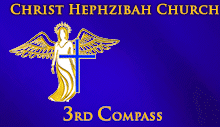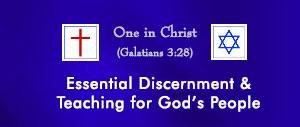For International Woman’s Day this year and also Woman’s History Month, I’d like to talk about Esther, the famous heroine in the Bible who helped save the ancient Israelites from certain destruction when they were exiled in Persia. Most of you know the story from the Book of Esther and the Biblical timeline, but for the uninitiated, the time of Esther came after the Second Temple in Jerusalem was built, after the reign of Persian King Cyrus the Great, whom God had prophesied would initiate the rebuilding of the temple over a hundred years before through the prophet Isaiah/Yeshayahu (Isaiah/Yeshayahu 44:28). Isaiah lived to about 100 years before the exile of the people and destruction of the first temple, which was sometime around 596 to 587 BC[1.1, 1.2] (there are conflicting sources for the actual date of the fall of Jerusalem, but the Bible says it was in King Nebuchadnezzar’s 9th year of reign (2 Kings/Melachim II 25:1)).
Of King Cyrus who reigned from 550-530 BC[1.4], God said, “He is My shepherd, and he will carry out all My desire. And [Cyrus] says of Jerusalem, 'She will be built,' and of the temple, 'Your foundation will be laid.'” (Isaiah/Yeshayahu 44:28). Then it was about 75 years after the second temple was complete (Ezra 6:15)[1.3] and 50 years after the reign of Cyrus that we see Esther coming to be selected as a potential replacement for King Xerxes I’s deposed queen, Vashti in the 6th year of his reign (Xerxes is also called Ahasuerus or Achashverosh in some texts). It was a year later that Esther was selected to be the new queen of Persia (Esther 2:16).
Note that the Jews were exiled in Babylon and Persia for many generations because this is over a century after the destruction of the first temple and about 35 years before God moves Nehemiah/Nechemya to return to Jerusalem in 444 BC to rebuild its walls and bring more of the exiles back to the homeland
(for more about that and additional prophecy to rebuild God’s temples, see There was not enough oil but the menorah remained lit).
Now, Esther was originally named Hadassah ( הדסה ) in Hebrew (Esther 2:7), which means myrtle[1.5], a fragrant bush or small tree bearing white flowers and black berries that is native to the Mediterranean and Middle East. But by the instruction of her guardian, Mordecai, she could not reveal her heritage, so her name was changed to a Persian one, Esther ( אסתר ), meaning “star”[1.6]. Mordecai likely told her to keep her identity hidden because the Jews were hated in Persia, so to not hinder Esther’s chances for selection as queen, Mordecai told her to keep her heritage secret.
You might think I’d focus on Esther’s portrayal of a strong woman heroine who braved the danger of approaching the king without being summoned, an act that was punished by death (Esther 4:11). Those who know the story, know that Esther had to try and approach the king without being asked, so that she could appeal for the salvation of her people. Afterall, the common modern Jewish depiction of Esther is that of a bold and brave woman who dared to oppose the dominance of men in the royal court, especially, Haman, the high official of the king’s court and main villain in the Book of Esther. It was Haman that schemed the royal decree to destroy all the Jews (Esther 3:1-15).
The story of Esther’s victory over Haman is well known, but it is not the one God had me see in Esther, or rather in what I found in her names. God hid numbers with meaning in her names, just like He did in His own names
(see The Actual Names of God and Christ for more). This was surprising to me, and what’s more, the numbers paint the picture I had of Esther that is true to her character and very nature rather than the strong, bold, unafraid, and independent super-feminist heroine Judaism often colors her with. My view of her is that of a brave and lovely young woman, very much like her original name’s sake, Hadassah - a fragrant, white blossoming myrtle tree - but not so bold and fierce as many depict her today. Esther had to muster up the courage to try and save her people because she was truly afraid of being put to death by approaching the king without summons
(Esther 4:10-11). Afterall, she had all the Jews in the capital city fast with her for three days and nights to petition for God’s help in approaching the king and saving her people, and even then, she said,
“If I perish, I perish” (Esther 4:15-16).
Esther was not certain if God would help or save her, much less all her people, and a 3-day and night fast from food and water is a much more serious fast. It is at the boundary of risking severe and permanent bodily harm, because, though someone can go without food for about a week, no intake of water for more than 3 days, as well, risks organ failure. I can attest in my own fasting of the same that a full 72 hours without food or water is difficult and always has gastrointestinal problems coming out of. Despite the fast’s harshness, Esther thought the need for God’s help was so great that she wanted to do the most severe fasting she could. This shows she was brave and very serious to get God’s help, though she did not have faith she would survive approaching the king.
Esther’s character was courageous and valiant in face of much fear for herself and her people. There’s no mention in the Book of Esther that God gave her any hope for success and deliverance. And to show this and reinforce her true nature, God hid the number 412 and 13 in her name. The Hebrew At Bash gematria value for Esther is 412 and its Hebrew Aik Bekar value is 13. If you’ve been with me a while, you likely heard of
the meaning of 13, but I rarely talk about
412.
Its significance is that it is just short of
413, which I have talked about over the years. 413 goes with scripture like Philippians 4:13, where the apostle Paul exclaims,
“I can do all things through [Christ] who strengthens me.” 413 represents the promise of God's hope and blessing to overcome great odds with the strength given by Him, NOT in searching for God’s strength or willing ourselves that strength, so 412 would go with NOT having God’s promise of hope and blessing to overcome great odds. God had the numbers in Esther’s name add up exactly to 412 to say how she had to give herself the will and strength to do what she had to do.
Esther did not have God’s promise or hope in the face of much fear and danger. But her name also adds up to be 13, as I said, which goes with the same
13-promise found in 413. It represents God’s promise in which only He can fulfill. That promise in Esther was not given to her as strength, but it was Esther, herself, who was God’s 13 Promise for her people – the only person who could save them because God predestined her to do so, just as Mordecai said to her,
“Who knows whether you had not come to be royalty for such a time as this?” (Esther 4:14)
It was God who blessed Esther to be beautiful and desirable as a myrtle, naming her Hadassah, and it was God who nurtured Esther to be humble, obedient, and respectful towards others. All of these traits helped her be selected as queen, so that she’d be in position to approach the king and save her people. God’s predestiny can be absolutely amazing, as I’ve seen His many wonders that have crossed the ages
(see Predestined for more), but I was surprised to see even more in Esther’s names.
When I was looking up gematria for Hadassah and Esther, I saw that the Hebrew At Bash value of Hadassah is 288 and the Latin value for Esther in the Latin alphabet is also 288
(English uses the same alphabet as Latin). This is an amazing link that God worked to show how the names, Hadassah and Esther, are the same. God did the same kind of numeric equality with the names, Jesus and Joshua, both equaling 444 which is also the same value given to the word, “messiah,” all for Old English gematria
(see The Names of Mashiach – Christ for details). But for Hadassah and Esther, God maintained the equality with two completely different alphabets and languages (Hebrew and Latin) that are separated by many, many centuries. How great is our God?!
El Elyon, God Most High, made it a point to have an equality between the names of Esther with two completely different languages and alphabets. The Hebrew for Hadassah is הדסה , while Esther, the transliteration of Hebrew ( אסתר ) is completely different.
I’ve not found this kind of equality with names outside of names for God and Christ, so God is saying it’s important to remember Esther’s first name, Hadassah or Myrtle, and not just her new name, Esther. Both were important to describe her true character. When I saw that Hadassah or Myrtle is also important, I looked up gematria for myrtle, and I couldn’t believe it, but the English Aik Bekar values for both Myrtle and Esther are 30. Why did God work out so many equalities with the names of Esther?
I truly don’t know, but it is something I will wait on the Lord to guide me further. Praise Yahovah Sabaoth (Yahovah of hosts) for His many awesome and inspiring works in all He does, with and for us. He has shown how a woman, predestined to save her people in times long ago, should be remembered – as a bright star (Esther) and a fragrant, attractive, and medicinal tree (Hadassah or Myrtle) - and that she shouldn’t be remembered as a fierce warrior woman, but had to put on great courage and strength without any reassurances from God to face the certain death she and her people were sentenced to.
That is how God saved His people in the time of Esther. He didn’t tell them they would be successful. Often times today, even with the eternal and reassuring promises of God through Christ, we, too, must face many dangers and tasks without any assurances from El Elyon, God Most High. May you all keep hopes in Mashiach Yeshua despite any fear or danger. Amen.
And even more, as I wrote this article, I noted further numeric meaning in the destiny God gave Esther. I said a gematria value was 13 for Esther, which means God's promise in which only He can bring forth. Esther embodied that promise, as I said, but I also saw an amazing numeric alignment in scripture that goes with Esther's predestined role to save her people. Did you catch it when I quoted Esther 4:14?
It reads, “Who knows whether you had not come to be royalty for such a time as this?,” referring to God's preordained destiny for Esther to become Queen of Persia. The 4 in this verse goes with the Hope for God's people Esther embodied, and the 14 goes with Esther's physical embodiment and placement as queen at just the right time to save her people - the 14-fulfillment of God's 13-Promise that He hid in her name. This is another of many numeric alignments God put into scripture that go with the meaning of numbers. They connect with exact verse numbers and spiritual meaning and significance that no one but El Shaddai, God Almighty, could possibly orchestrate. Truly, there is no one like the Lord.
References
[1.1] "Introduction to Isaiah". NIV Study Bible (NIV 1973, 1978, 1984). Page 1031. Grand Rapids, Michigan. Zondervan. 2002. Print.
[1.2] "Chart: Old Testament Chronology". NIV Study Bible (NIV 1973, 1978, 1984). Page xxii. Grand Rapids, Michigan. Zondervan. 2002. Print.
[1.3] "Chart: Chronology: Ezra-Nehemiah". NIV Study Bible (NIV 1973, 1978, 1984). Page 671. Grand Rapids, Michigan. Zondervan. 2002. Print.
[1.4] “Cyrus the Great”. Wikipedia. Retrieved 2025 Mar. 8.
<https://en.wikipedia.org/wiki/Cyrus_the_Great>
[1.5] "Entry for Strong's #1919 - הדסה 'Hadassah' (myrtle)". Brown-Driver-Briggs Hebrew and English Lexicon. BibleSoft, Inc. 2002, 2003, 2006.
[1.6] "Entry for Strong's #635 - אסתר 'Esther' (star)". Brown-Driver-Briggs Hebrew and English Lexicon. BibleSoft, Inc. 2002, 2003, 2006.


